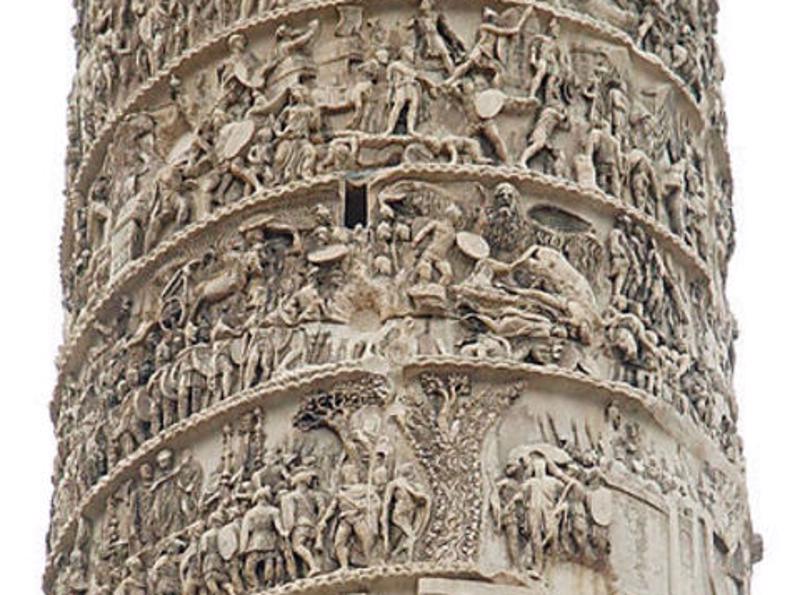Rome
As the Empire emerged, though the Roman Forum was still in use, emperors began building their own fora as a way to show their power and express their accomplishments. All built near one another, these areas today are known as the Imperial Fora. The practice actually began with Caesar, who built his own Forum with a temple to Venus. Augustus followed suite, including a temple to Mars in his forum; Vespian added the Temple of Peace; Domitian built a temple to Minerva; and Trajan built a particularly impressive market that functioned as a business, political, and religious district. Trajan built his forum in celebration of his victory in the Dacian Wars, and particularly glorifying and propagandic was the column built in his honor with narrative carving of scenes from the war, as tall as the hill he removed in order to create the forum. Trajan’s grand column would inspire other victory columns like it. As with many other historical objects in Rome, the Church later replaced Imperial art with art to honor the church or papacy, replacing the statue of Trajan at the top of the structure with one of Saint Peter. Mussolini would later restore the Imperial Fora in appreciation of past Roman might, yet he also built a road over the fora for his own use that is still there today.
The Roman Empire
January 11, 2019
|
Rome, Italy
As the Empire emerged, though the Roman Forum was still in use, emperors began building their own fora as a way to show their power and express their accomplishments. All built near one another, these areas today are known as the Imperial Fora. The practice actually began with Caesar, who built his own Forum with a temple to Venus. Augustus followed suite, including a temple to Mars in his forum; Vespian added the Temple of Peace; Domitian built a temple to Minerva; and Trajan built a particularly impressive market that functioned as a business, political, and religious district. Trajan built his forum in celebration of his victory in the Dacian Wars, and particularly glorifying and propagandic was the column built in his honor with narrative carving of scenes from the war, as tall as the hill he removed in order to create the forum. Trajan’s grand column would inspire other victory columns like it. As with many other historical objects in Rome, the Church later replaced Imperial art with art to honor the church or papacy, replacing the statue of Trajan at the top of the structure with one of Saint Peter. Mussolini would later restore the Imperial Fora in appreciation of past Roman might, yet he also built a road over the fora for his own use that is still there today.

Share your travel adventures like this!
Create your own travel blog in one step
Share with friends and family to follow your journey
Easy set up, no technical knowledge needed and unlimited storage!